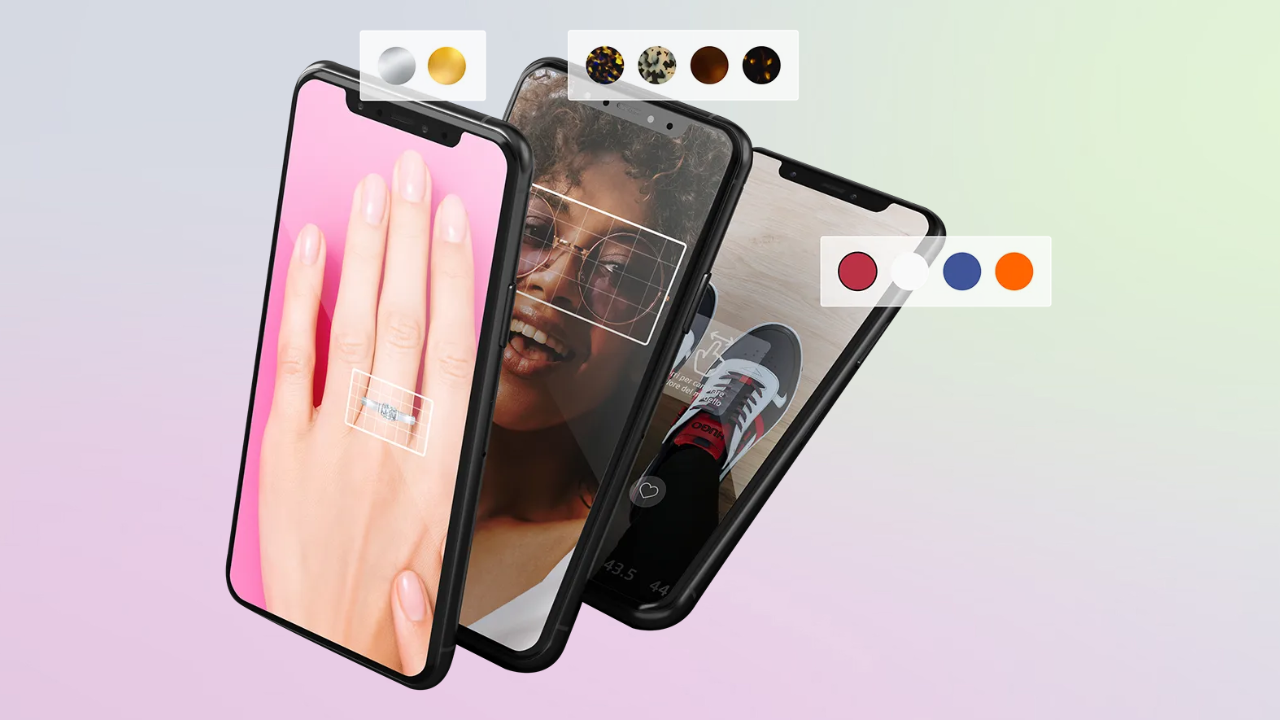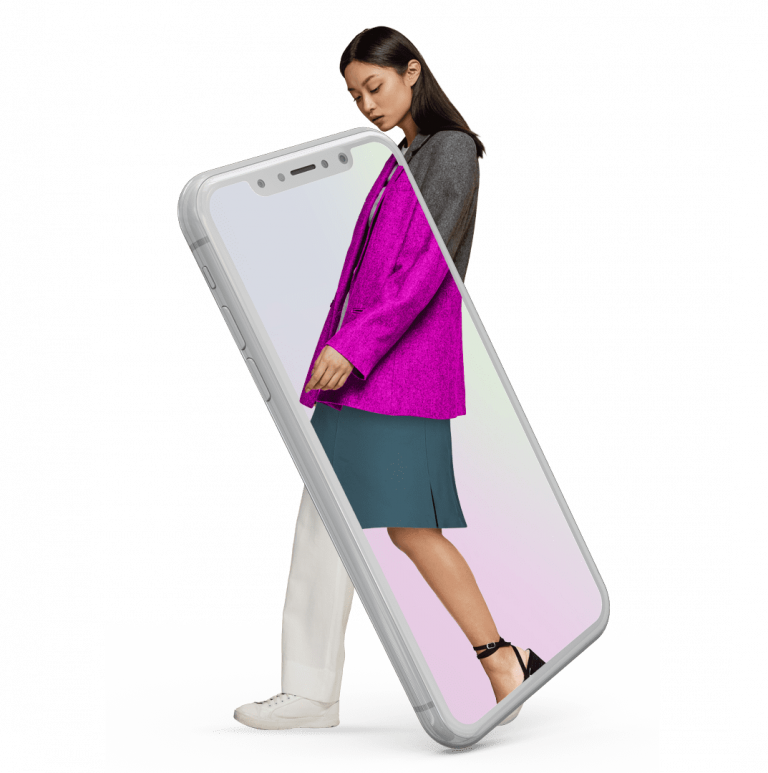With an increased customer demand for interactive and fun shopping experiences, virtual try-ons have gained sizable attention. But, is it worth it?
This article helps you understand what a virtual try-on is, the benefits and downsides of using it, if it’s safe to use, and the best way that you can create one for your business.
What Is A Virtual Try-On?
Virtual try-on is a game-changer for eCommerce. Think of it like bringing the dressing room experience right to your customers’ screens.
It typically involves the use of augmented reality (AR), artificial intelligence (AI), and/or 3D modeling to superimpose digital representations of products onto images or live video feeds of the user. Customers can then see how the products would look on themselves in real-time or through uploaded photos.
It is particularly prevalent in industries such as fashion, cosmetics, eyewear, and jewellery, where the fit and appearance of products are important factors in the purchasing decision.
Take clothing, for instance. With virtual try-ons, customers can see how different styles and sizes fit their body shape without ever setting foot in a store. That means fewer returns due to sizing issues and happier customers overall.
But it’s not just clothes and online boutiques. Virtual try-on works wonders for things like makeup, eyewear, and even furniture. Customers can see how a lipstick shade complements their skin tone or how a pair of glasses suits their face shape — all without leaving their couch.
Why To Use Virtual Try On?
Imagine this: your customers can see how that cool jacket or those sleek sunglasses will look on them before hitting that buy button. That’s like having a personal stylist right in their living room! When shoppers feel confident about their choices, they’re more likely to make the purchase. And happy customers mean more sales for you!
Returns can be a headache, right? But with virtual try-on, you’re giving your customers the power to make informed decisions about size and style. That means fewer returns for you to deal with – saving time and money in the long run.
Virtual try-on isn’t just about selling products; it’s about creating an experience. It’s like bringing the fitting room to your customers’ devices! When shoppers can interact with your products in a fun and personalized way, they’re more likely to come back for more.
In a sea of online stores, standing out is key. So, imagine scrolling through your social media feed and seeing a friend trying on the latest fashion trends virtually. Pretty cool, right?
It’s not just fun – a virtual try-on is smart marketing too. By showing off this tech on platforms like Instagram or TikTok, you can create buzz and get people talking. You could promote virtual try-ons as a QR code in a billboard or print ad. Using any reliable QR code generator, you can create QR Codes for a virtual-try experience, simplifying the process for shoppers but also adding a touch of convenience and innovation to their shopping journey.
Such campaigns let your target audience try out your product for themselves! It sets your brand apart from the competition.
Virtual try-on isn’t just about making sales; it’s also about learning what your customers want. By analyzing data on usage and feedback, you can fine-tune your offerings and marketing strategies. It’s like having a crystal ball in your customers’ minds!
How Do I Create A Virtual Try On?
Zakeke offers a Virtual Try-On tool for you to allow customers to virtually try on your products before making a purchase.
It uses WebAR technology to deliver hyper-realistic detail on any device, without the need for any downloads. This technology can be integrated across platforms using QR codes, links, or iframes.
For eyewear shopping, Zakeke offers an AI-driven scale technology that accurately measures head size. The Pupillary Distance tool simplifies the calculation of pupillary distance by fitting the head in an on-screen frame.
Customers can design their perfect eyewear, hats, jewels, or glasses and instantly try them on their faces via the website. This technology leverages runtime 3D models, providing customers with a fully customized experience.
The best part is that this tool can be seamlessly integrated with all eCommerce platforms.
Is Virtual Try-On Safe?
Virtual try-on can be safe if you take solid steps to keep customer data safe and respect their privacy.
The first step is to ensure that the virtual try-on features respect the privacy and intellectual property laws in your jurisdiction. Privacy laws in the AR/VR space are still evolving despite recently introduced laws like GDPR in Europe.
As such, while using robust tools like Zakeke can keep eCommerce stores and their customers safe from a cybersecurity standpoint, it is important to make sure that you are not sidestepping potential privacy issues.
As a business, here are some things to ensure you are not compromising the privacy of your users while deploying virtual try-on technology:
- Make sure you are encrypting all endpoints between a tool like Zakeke and your database;
- While you may retain the Intellectual Property of your products, and the customer may virtually try on your products, they still own the copyright of their photos. So, do not use photos or videos of them trying on your product without explicit permission.
Use plain language to communicate this with your customers so they know exactly what they’re agreeing to. And hey, you should give them the option to say no if they’re not comfortable.
To make customers feel sure that nobody’s messing around with their virtual try-on session, you should have solid ways of checking that it’s them. Think of stuff like double-checking their identity and making sure only the right people can see their info.
Before you start taking pictures or videos of your customers for virtual try-ons, you should ask for their permission. They should be able to say yes or no, with no questions asked.
What Are The Challenges Of Virtual Try On?
Unless you’re using a third-party tool like Zakeke for providing a virtual try-on experience to your customers, setting up virtual try-on tech can be a bit tricky and might take some serious investment in software and tech know-how.
Sometimes, what you see in a virtual try-on isn’t exactly what you get in real life. That could lead to some disappointment for customers if things don’t match up, leading to an increased return rate.
Collecting and storing data for virtual try-on means you need to be super careful about keeping customer info safe and sound. It’s all about protecting their privacy through and through.
Virtual try-on might not work for every type of product or be incompatible with all devices. That means it might not be an option for everyone or every situation.
So, before you adopt this tech, you should carefully evaluate these factors and assess their readiness to address the associated challenges.
Most importantly, you should be sure that this experience is really what your customers want and choose an expert provider like Zakeke.
Anand Srinivasan
Founder of CWVIQ
Anand Srinivasan is the founder of CWVIQ, a free tool that alerts website owners for when their sites are running slow.














